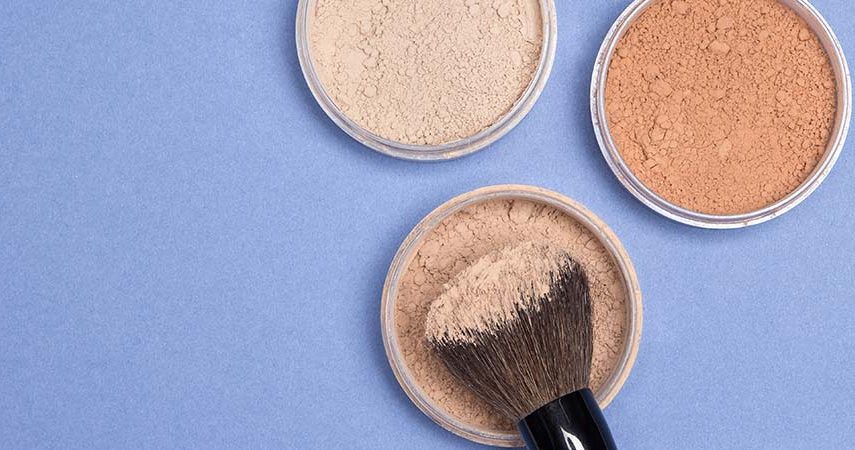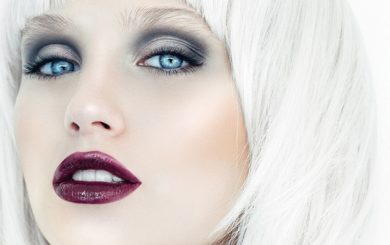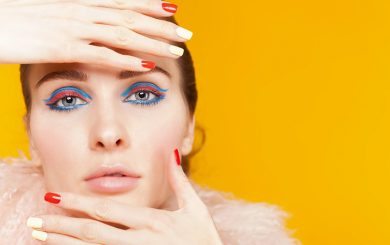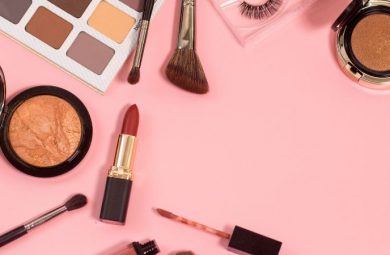Are you thinking about going out and enjoying a full-face of makeup for 10+ hours? Enjoying flawless makeup during the entire day is possible!
However, there are certain steps that you need to follow along if you want to enjoy long-lasting and high coverage base, with minimal mishaps. For instance, make sure you always set your makeup in place with either a loose or pressed powder.
Why you need to do this and what is the right way to do it? The answer is right below.
Why Do You Need a Makeup Finishing Powder?
If you are trying to hide, cover, or tame down any oils from your face you should purchase a pressed powder. It seals your makeup in place and leaves you with a flat and smooth surface to further apply your products.
Women who have extremely oily skin should always apply powder, while those who are on a drier side can go in with a smaller amount, or can totally skip applying powder if they prefer radiant and a wet skin look.
What Is a Finishing Powder?
A finishing powder is often presented as a setting powder or even an HD powder. Every makeup brand comes up with different names for their finishing powders. However, all three of these are quite similar and in the same group of products, but are actually quite different and used for achieving other finishes on top of the skin.
For instance, a setting powder is applied on top of your liquid foundation. A setting powder can be pressed and tinted, or it can be translucent and see-through. These can hold your makeup on for hours in place and are often quite high-coverage.
A makeup finishing powder can go on top of the setting powder if you want to blur the skin and smooth out any pores, or the appearance of fine lines. Finishing powders are always white and translucent and are higher coverage than the pressed setting powders. These need to be properly blended deep into the skin if you want to avoid that white-hue on the skin.
Lastly, HD powders are high definition powders which are often used on big sets, TV’s, and in the movies since they are high quality.
Finishing Powder vs Setting Powder: What’s the Difference?
A finishing powder will almost always come in white or light yellow shades, and will feel a lot softer, buttery, and will look finely milled than once compared to other setting powders. Women usually purchase a makeup finishing powder if they are having a hard time trying to match the right colored tinted powder to their skin tone.
A setting powder sets the foundation in place and prevents it from moving or rubbing off. It hides away any shine and looks a bit more natural (if correctly matched to your skin tone) than the finishing powder.
In most cases, women will bring a pressed setting powder with them outside the house to ‘touch-up’ throughout the days and tame down their oils.
Related Search Topics (Ads)
Related Products
Is Finishing Powder Necessary?
This all depends on your personal preference and the outcome that you are trying to achieve. Women who love high-coverage foundations and base products should use a finishing powder on top of their setting powder.
Those who are trying to look as natural as possible should only apply a bit of powder onto their T-zone.
However, if you’ll be taking a lot of pictures and you are planning on wearing both pressed and finishing powders make sure you seamlessly blend them down your neck, and push the products deep into your pores.
In case you don’t, you might end up with a flashback, which is a poor white hue all over the skin.
How to Use a Finishing Powder
When doing your makeup it is essential to apply it the right way, and by making the following steps:
Step 1: Primer
Your face products will stick to the skin easily and the best as long as the skin is moisturized and nourished. Make sure your face is cleansed, free of any product, and drenched with either a moisturizer or your favorite go-to daily primer.
Step 2: Foundation
Apply your trusted foundation with your sponge or foundation brush by making tapping motions. After you achieve your wanted coverage level go in with concealer and hide away any spots, blemishes, or redness that may be peeking through.
Step 3: Makeup Finishing Powder
Apply your makeup finishing powder with a round powder brush. Make sure it has loose bristles and then blend in with a stiff kabuki brush.
Press the product into the skin to avoid the flashback, and make sure you apply it onto your cheeks, nose, forehead, and under eyes. You can avoid your jawline as well as the eyeball area.
Step 4: Touch-Up
Finish your face makeup by adding a highlighter, bronzer, and blush. Do neutral eyeshadow and don’t forget to comb your brows!
Once you head out the house carry a small powder puff or a small kabuki brush to reapply the product all over.
If your oil peeks through a bit often than the usual you can also try out some blotting papers.





